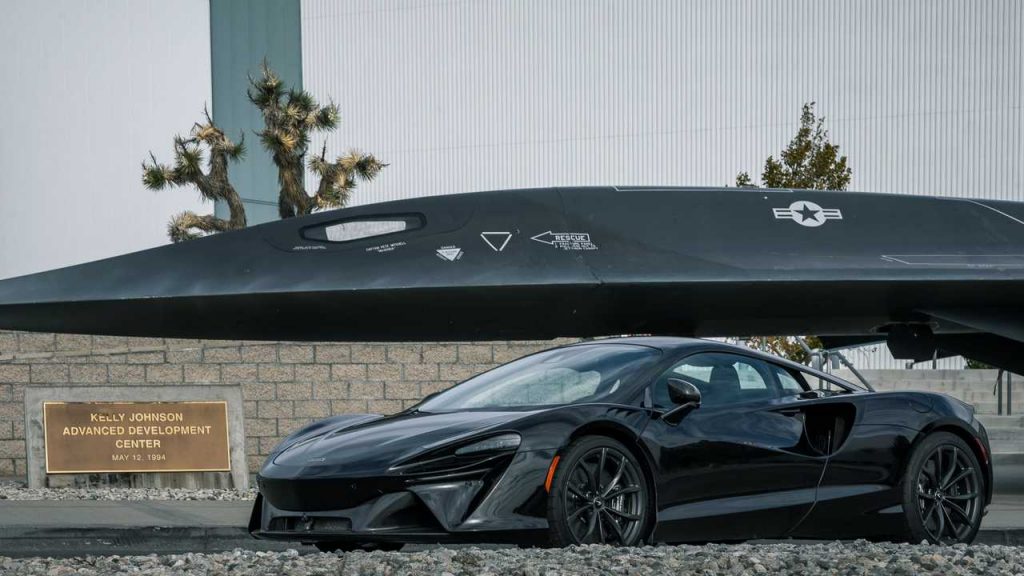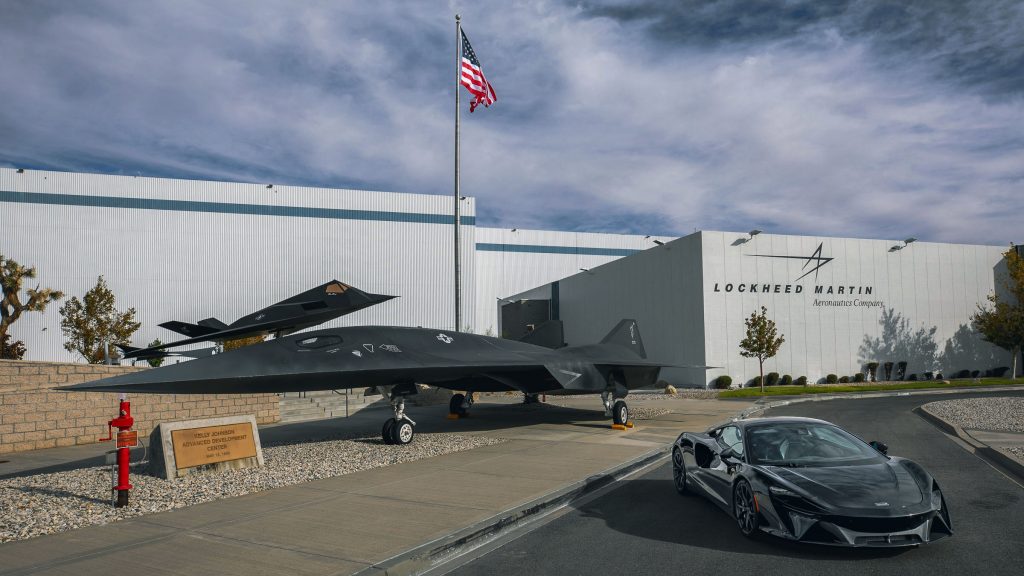McLaren has announced a partnership with Lockheed Martin Skunk Works to develop “futuristic” supercars. Lockheed’s brilliantly named SW division was, of course, responsible for the “Darkstar” hypersonic concept aircraft featured in the blockbuster Top Gun: Maverick film, while the latter is self-explanatory.
While no specifics have been revealed, the collaboration is said to be working on transforming the aerospace company’s design software into something that can be used to build supercars. The partnership with Lockheed will allow McLaren to “push the boundaries and find new disruptive solutions to making the ultimate supercars.” McLaren’s CTO, Darren Goddard, stated that the company’s collaboration with Lockheed Martin Skunk Works is a natural fit for the brand and will benefit customers in the long run.

Because its “pioneering software sets the parameters for high-speed systems more accurately and quickly than traditional design methods,” the partnership will seek to transfer Lockheed’s systems to the world of automobiles. To commemorate the union, both companies decided to display their wares outside the Skunk Works headquarters in California: McLaren brought an Artura, while Lockheed brought the aforementioned Darkstar.
The F-22 Raptor, F-35 Lightning II Stealth Fighter, and U-2 Spy Plane were all developed by Lockheed Martin Skunk Works. The company also created the Darkstar, a concept hypersonic jet that appeared in the film Top Gun: Maverick. Lockheed Martin also created the SR-71 Blackbird, which currently holds the world’s absolute speed record of 2,193 miles per hour (match 3.3).

“McLaren is a pioneering company that has always pushed boundaries and sought out new innovative and disruptive solutions to making the ultimate supercars,” said McLaren Chief Technical Officer Darren Goddard. “Working alongside an iconic company such as Lockheed Martin Skunk Works, renowned for their visionary focus on the future, is a natural fit.” “We hope this is the start of a longer and deeper collaboration that will benefit our customers in the long term.”
McLaren is no stranger to setting new speed records. Andy Wallace drove the McLaren F1 to an average top speed of 240.1 mph in 1998, eight years after the SR-71 Blackbird was retired from service. It surpassed the F1’s previous record of 231 mph to become the world’s fastest production car, a title it held for several years until the Bugatti Veyron’s 253.8-mph run in 2005. Even 30 years after its debut, the F1 remains one of the world’s fastest-production vehicles.


